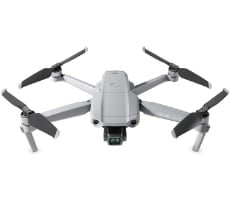Android 2.2 Review: A Deep, Delicious Dive Into Froyo

Up until that point, Apple basically held the entire smartphone world in their hands. BlackBerry loyalists stuck with their push-enabled handsets, but Windows Mobile users were leaving in droves. Very few options existed in the mobile OS space, opening up a perfect opportunity for Google to do what Google tends to do best: exploit market opportunities, and turn entire sectors on their head.
At the beginning, Android wasn't incredibly advanced. Sure, it supported multi-tasking natively, and the introduction of on-screen "widgets" was something that certainly got the attention of many users who were used to the app universe that Apple had created. Furthermore, the Android App Market was bare compared to Apple's flourishing App Store, and no one really knew how many carriers and phone manufacturers would end up supporting the platform.

Android took an open-source approach, one very different than the closed-natured iPhone OS (now iOS). Over the past 18 months, Android has evolved rapidly, leaving its origins in the dust and racing ahead to catch up, and even pass, Apple in some respects. In fact, the earliest Android handsets can't even be upgraded to Android 2.1 due to hardware limitations; it's clear that Google has no plans of slowing down, and if you want to keep up with the rapid pace at which this OS is growing, you'll need to pony up for the new hardware to support it.
It's an approach that has caused quite a polarizing effect. Some people suggest that the "fragmentation" is bad for the industry as a whole, while others suggest that leaving the past behind in order to form a more functional and innovative future is a great move. Microsoft tried for too long to support its aging Windows Mobile user-base with backwards compatibility, and they ended up missing an entire cycle of smartphone buyers before finally introducing Window Phone 7 (which still won't be available for purchase until this Fall).

A lot can happen in 18 months, particularly with an open source project with a name like Google behind it. Android has become one of the most innovative mobile operating systems available, with many aspects eclipsing iOS from Apple. Android 2.1 is an extremely refined OS, with multiple home screens, full multi-touch support, the world's best smartphone turn-by-turn navigation system (Google Maps Navigation) and the ability to "sideload" applications and music. That last bit means that users can simply drag apps, music and other media from their computer onto the microSD card loaded in their Android phone and then manage it from within the handset itself; no iTunes or other software required.
But even Android 2.1 has shown signs of age, and Google knew that in order to keep up with the competition, they had to reveal a killer upgrade that would keep people coming back. Earlier in the year, several reports revealed that Android was actually growing at a faster clip than iPhone OS, and the App Market soared past 50,000 apps to boot. That's still far less than the 200,000+ in Apple's App Store, but most all of the vital apps are now available in both stores, greatly leveling the playing field.

Android 2.2 was introduced at Google's own I/O conference in San Francisco this past May, promising to add a number of much-wanted changes and even a few things that iOS does not support. We've recently acquired the final gold build of Android 2.2, or "Froyo," on our in-house Nexus One, and we'll be detailing every last change and performance tweak in the pages ahead. Join us as we take a deep dive into the world of Android 2.2, Google's latest and greatest mobile OS version.






